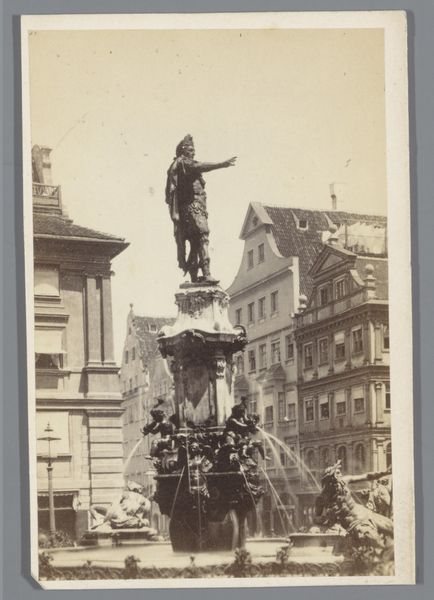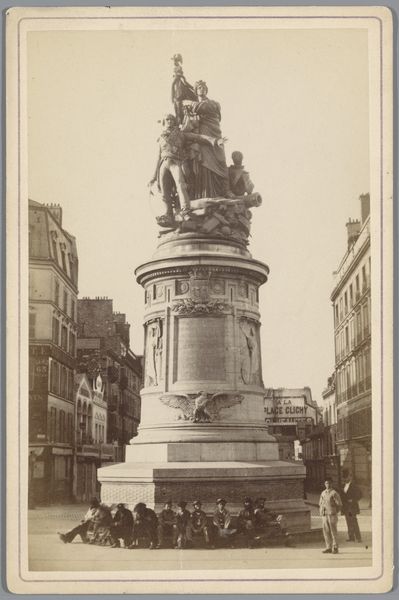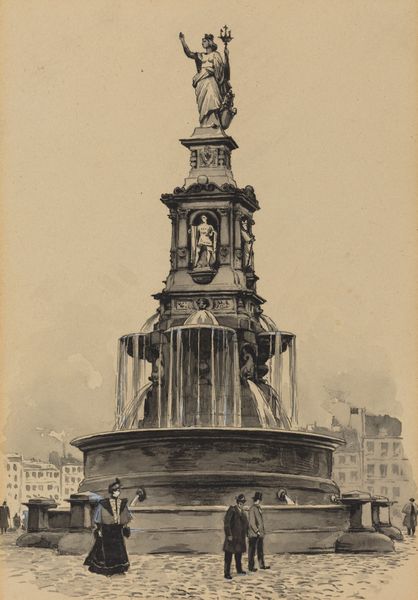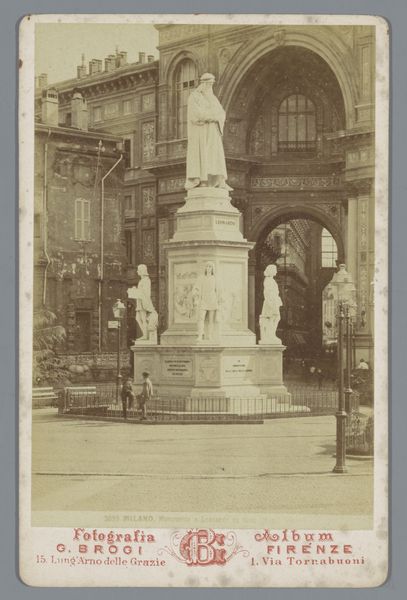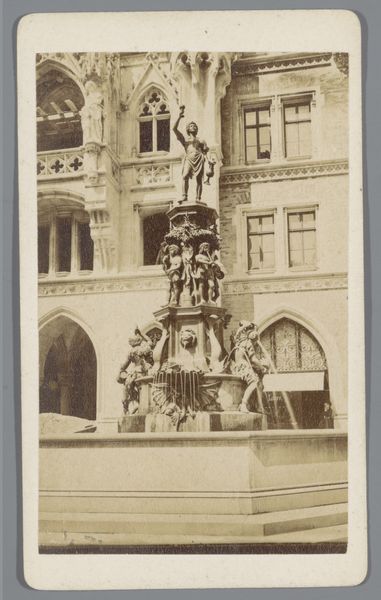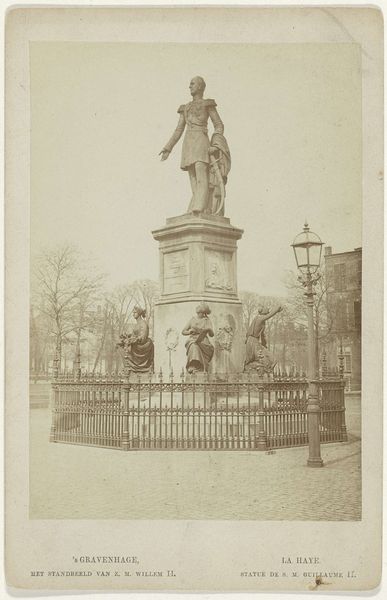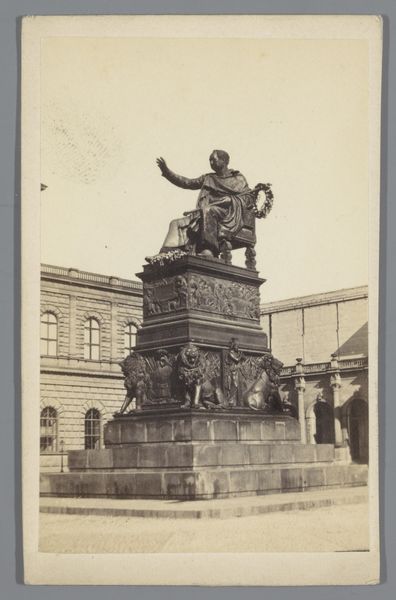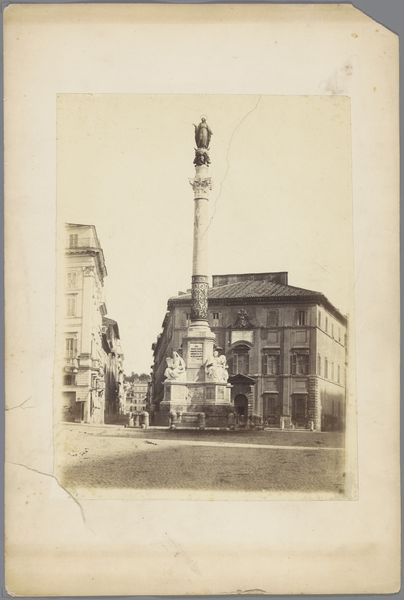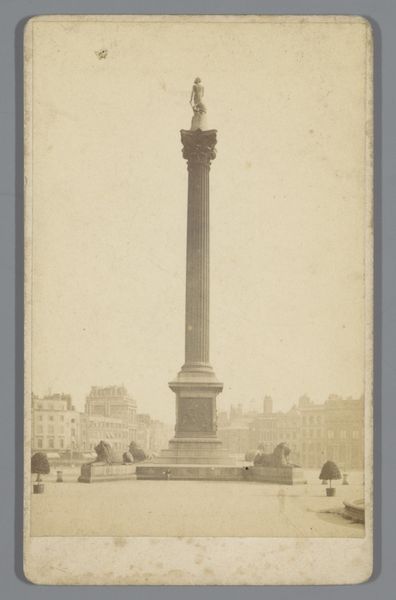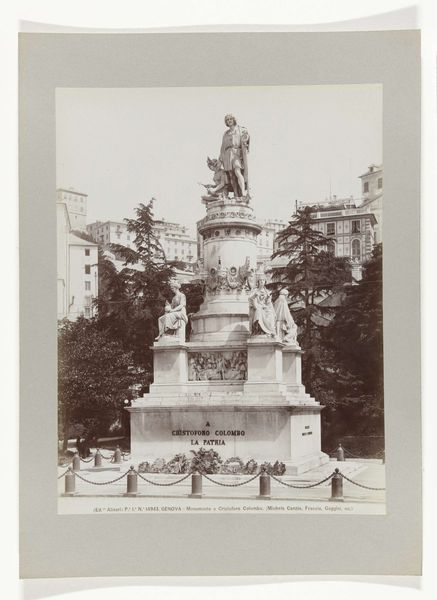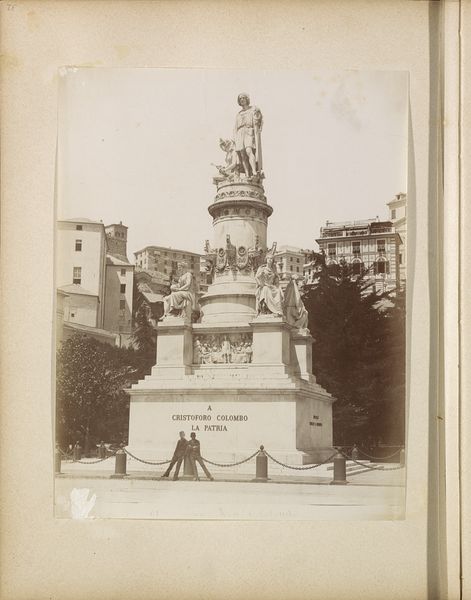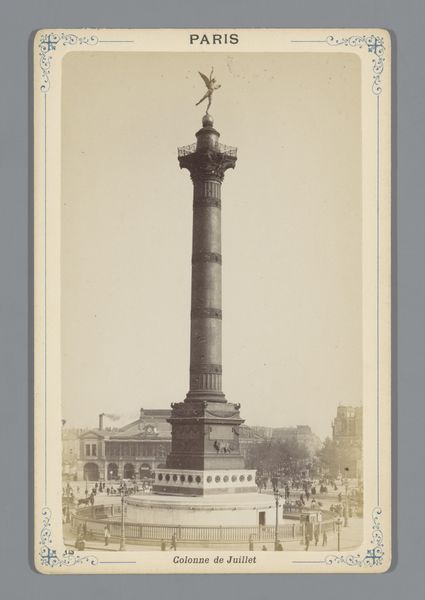
photography, gelatin-silver-print
#
landscape
#
photography
#
gelatin-silver-print
#
cityscape
#
realism
Dimensions: height 100 mm, width 64 mm
Copyright: Rijks Museum: Open Domain
Editor: Here we have an anonymous gelatin silver print from between 1855 and 1885, titled *Fischbrunnen op de Marienplatz in München*. The photo shows a very ornate fountain in a public square; there's a feeling of grandeur, almost a celebration of civic pride. What do you see in this piece that might tell us more? Curator: It's precisely that sense of civic pride we should examine. Consider the historical context. This photograph emerges from a period of rapid urbanization and industrialization in Munich. Public monuments like this weren't simply decorative. They were deliberate tools used by civic leaders to construct a shared identity and reinforce social hierarchies. Editor: So, the fountain isn't just a fountain. It's… a statement? Curator: Absolutely! Think about who’s represented, and how. Is it the working class who benefited most visibly from the industrial growth, or perhaps those in positions of power? Note the architectural style; does it echo imperial aspirations, or invoke a more localized, populist aesthetic? Moreover, how might gender roles be inscribed into the visual rhetoric of this civic space? Do you see how these urban spaces often served to promote particular visions of society, implicitly excluding or marginalizing others? Editor: I see what you mean. The scale and central placement suggest a sort of dominance, reinforcing certain values while maybe overshadowing others. Curator: Exactly! It asks us to critically examine whose stories are being told and whose are being omitted within the frame of this photograph and within the city itself. What power dynamics are at play in what we see and what we don't? Editor: This has given me a lot to consider about not only the image, but what it represents about that time period and the city. Curator: And remember, photographic technology itself was emerging as a tool of documentation and social control during this era, adding another layer of complexity to our interpretation. The fountain isn't just a landmark; it’s a performance within a meticulously curated stage.
Comments
No comments
Be the first to comment and join the conversation on the ultimate creative platform.
